Portrait of Cardinal Bernardino Spada – a diligent, hard-working, and prudent official
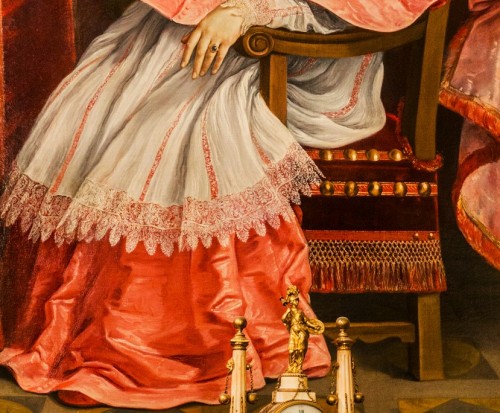
Portrait of Cardinal Bernardino Spada, fragment, Guido Reni, Galleria Spada
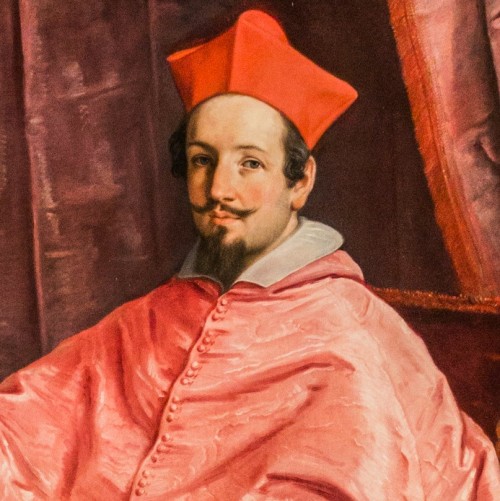
Portrait of Cardinal Bernardino Spada, fragment, Guido Reni, Galleria Spada
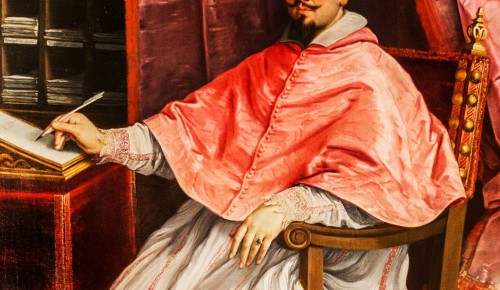
Portrait of Cardinal Bernardino Spada, fragment, Galleria Spada
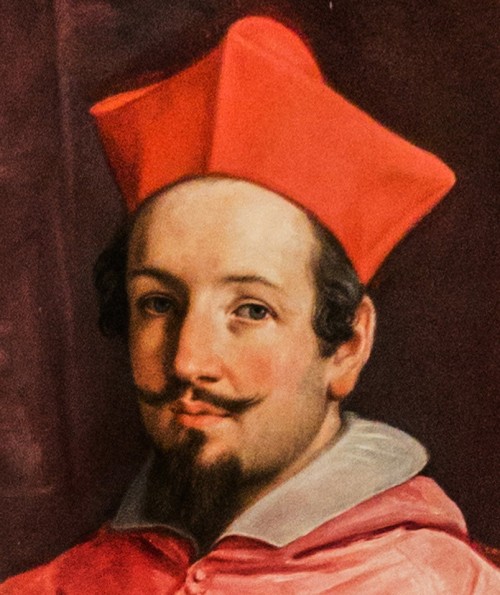
Portrait of Cardinal Bernardino Spada, fragment, Galleria Spada
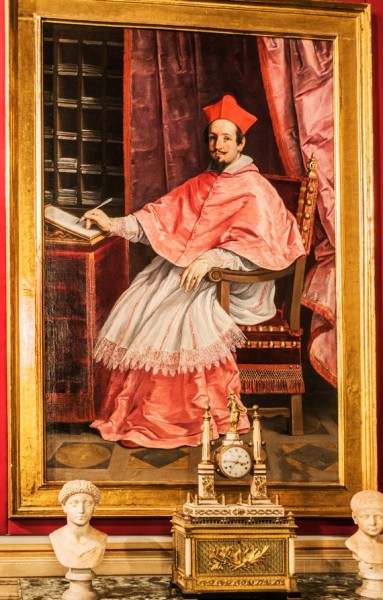
Portrait of Cardinal Bernardino Spada, Guido Reni, Galleria Spada
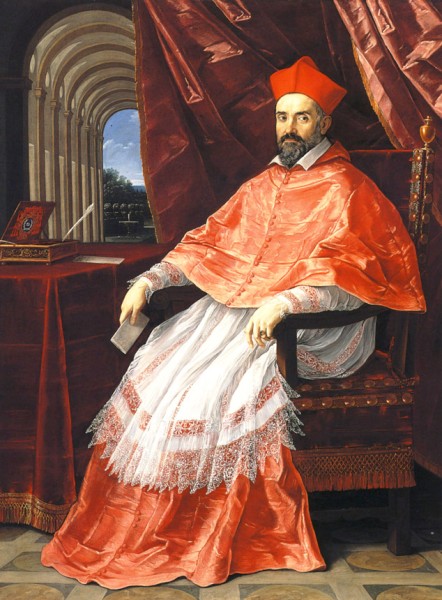
Portrait of Cardinal Roberto Ubaldini, Los Angeles County Museum, USA
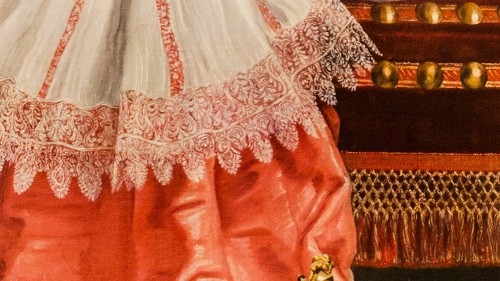
Portrait of Cardinal Bernardino Spada, fragment, Guido Reni, Galleria Spada
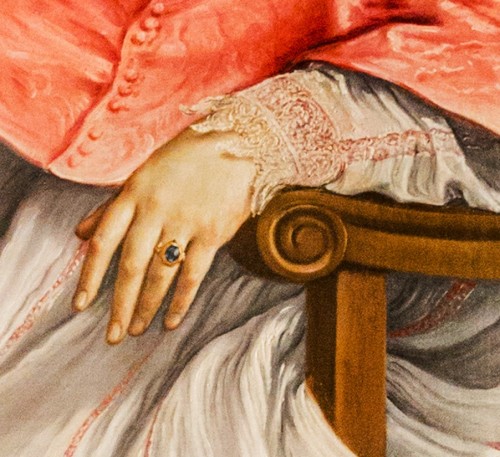
Portrait of Cardinal Bernardino Spada, fragment, Guido Reni, Galleria Spada
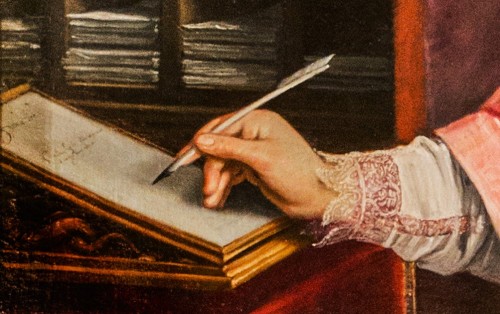
Portrait of Cardinal Bernardino Spada, fragment, Guido Reni, Galleria Spada
Since the very beginning of his services at the court of Pope Urban VIII Cardinal Spada was considered a dutiful, unyielding, and consistent man. Tall and well-built, he was seen as a handsome man, who garnered respect, and even fear, due to both his mental and physical qualities, but was not well-liked. And if on top of that, we add the perfectionism and pedantry that was attributed to him, then his portrait would be complete. However, the cardinal was not much concerned about his spiritual and mental qualities when he entrusted the painting of his portrait to the Bolognese painter Guido Reni.
Since the very beginning of his services at the court of Pope Urban VIII Cardinal Spada was considered a dutiful, unyielding, and consistent man. Tall and well-built, he was seen as a handsome man, who garnered respect, and even fear, due to both his mental and physical qualities, but was not well-liked. And if on top of that, we add the perfectionism and pedantry that was attributed to him, then his portrait would be complete. However, the cardinal was not much concerned about his spiritual and mental qualities when he entrusted the painting of his portrait to the Bolognese painter Guido Reni.
The proof of his devotion to the Church and the Barberini family had already been given by Bernardino Spada during his nunciature in France, and then in Bologna which was subordinate to the State of the Church (1627-31), where, as the pope's legate he exhibited resourcefulness in the epidemic, hunger, and war prevalent in the city. While in Bologna, he also met the famous painter and several times he acted as an intermediary between the artist and the rich and famous who wanted to acquire the works of the divine Reni. Reportedly they both liked and respected each other, and the result was the creation of a representative portrait of the cardinal immediately prior to him going to Rome. As it seems, Reni had been chosen by the cardinal since he was the author of another whole portrait, which appealed to Spada. He most likely saw it in Reni's workshop and it had to make a great impression on him. The portrait in question is one that depicts Spada's predecessor at the post of legate of Bologna – Cardinal Roberto Ubaldini. In one of his letters, the cardinal informs his brother (Virgilio Spada), that his portrait will not be lesser than Ubaldini's portrait. Was it the painting quality that weighed on such a choice – probably yes, but above all it was the pride, lofty dignity, and aristocratic spirit emanating from Ubaldini's portrait (Los Angeles County Museum)? We can only imagine the cardinal pointing out his predecessor’s portrait to Reni and saying – this is the exact portrait I want, let us change the details a bit, work them out, but it must be like that – exactly like that.

It must be added that in the 30s of the XVII century, Guido Reni enjoyed an almost divine charisma and did not complete portraits too often. In this case, the task proved particularly difficult. He had to combine into one the qualities of Cardinal Spada referencing his services to the State of the Church, along with the expected from the portrayed elegance and a certain dose of refinement – however not too great, not exaggerated. The final detail was the expected majestic and representative character of the portrait, which the cardinal desired to present to his guests after arriving in Rome at his new residence in the Palazzo Spada.

We can only assume, that behind this decision lay a deeply hidden feeling of inferiority in relation to the old families, as the Spadas were not such a family. After all, who was the father of the cardinal – a rich entrepreneur and a parvenu Paolo Spada, in the face of the aristocratic roots of Ubaldini related to the Florentine de Medici family, and to Pope Leo XI and himself a would-be nepot. It is enough to take a look at the hardy visage of Ubaldini, his proud figure, and the aristocratic aloofness and family coat of arms to see in the painting everything that was the embodiment of a high-ranking papal official. Even the colonnade finished off with arcades, seen on the left, opening up onto a distant landscape is a testimony to the higher interest of the cardinal – architecture and nature.

Cardinal Spada in admiring the portrait of his predecessor knew that it had to be formally similar but filled with different content. And that is why, the cardinal is depicted inside his study, meaning in the place of his daily, laborious work. He is writing a letter to a pope, which we can tell from the heading on the paper Beatus Padre. In the background, we can see a shelf with compartments and segregated letters – evidence of diligence and reliability in performing the duties of the papal legate. From Virgilio Spada, we also know that the cardinal liked to write and most of his time, also his free time, was spent on correspondence. Upon his handsome face, we can see intelligence and calmness both signs of prudence and restraint. He is not smiling and is looking directly at us piercing us with his gaze. In one hand he is holding a pen, as if he had just been pulled away from writing, the other elegantly flows down the arm of his chair. His almost woman-like, well-tended palms show his delicateness and sensitivity of character. The cardinal's ring upon one of his fingers reminds us of his vow to serve the Church and be faithful to Christ, the Gospels, and the pope. His head is covered with a tetragonal red biretta – a symbol of the cardinal's power. The painter (most likely his workshop) devoted a lot of attention to showing off the shiny surface of the cardinal’s satin, light-scarlet cassock and mozzetta (cloak), but above all the white finished off with embroidery surplice. With great care, much greater than in Ubaldini’s portrait and probably at the behest of Spada himself with great finesse, the artist showed every detail of the cardinal’s dress as well as other elements – the brass buttons on the back and seat of the armchair and its tassels. We can also see these tassels in the edging of the curtain found in the background, which also constitutes the background for the portrayed figure. It is well to underline, the so often praised in Reni’s works harmony of the selected colors – light scarlet contrasted with burgundy and dirty pink, which makes the painting monochromatic to some extent, yet at the same time richly chromatic. Interestingly enough, similarly to Ubaldini, in this painting there is also no symbol of religious cult, not even a small cross – and also through that, we can see the emphasis placed upon the representative image of a high-ranking official of the State of the Church, who wants to show that he works diligently and it is due to this diligence and meticulousness in the service of the pope that he owes his position. Thus the painting is a recommendation of himself – a diligent official and a trustworthy aide. It is proof that as opposed to Cardinal Ubaldini, considered an ally of the Grand Duchy of Tuscany, Spada is devoted solely to the pope and the State of the Church.

In the portrait, as if in a lens we can see, how difficult of a task befell artists at that time, and how little space they had to deal with. The client generally had a very distinct view of his portrait and himself, and the artist was tasked with making this view a reality so that it would please his client. Therefore, is this portrait a reflection of the cardinal, or perhaps the image which he himself wanted to show his contemporaries and future generations? Regardless of the conclusions we reach, the portrait itself is masterfully painted and shows off the extraordinary talents of Guido Reni.
Portrait of Cardinal Bernardino Spada, Guido Reni, 1630-1631, oil on canvas, 222 cm x 147 cm, Galleria Spada























